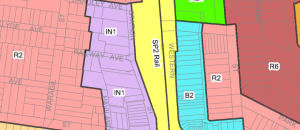Lifting the Limits on Compensation |
This article examines the process and the compensation available when private land is earmarked in planning schemes for future infrastructure projects.
As part of the planning process, Government authorities and local councils may designate land as required for open space, national parks, roads, railways hospitals schools and other public purposes listed under section 26(1)(c) of the Environmental Planning and Assessment Act 1979. In order to reserve that land for those purposes, and to prevent conflicting development, local councils have the power to rezone the land. It is identified on a ‘Land Reservation Acquisition Map’ in the Local Environmental Plan. The government authority that designated the land for rezoning is acknowledged in the Local Environmental Plan.
Hardship
Rezoning for a public purpose has catastrophic effect on the value and saleability of the land. Thankfully, the affected landowner has a remedy under the Land Acquisition (Just Terms Compensation) Act 1991. If it can demonstrate hardship, then it can oblige the constructing authority to acquire the land within 90 days. Hardship is established by showing there are personal, domestic, social or economic loss pressures forcing a sale, but the land is unsaleable at its former value. During the second reading, the parliamentary sponsor suggested that it would apply in situations where a resident has been relocated to a job in another State; a family has to relocate for health reasons or outgrows its accommodation; the owner needs to move closer to sick relatives or that maintenance is beyond the owner’s capacity as well as other circumstances.
The process is initiated by serving an approved form on the constructing authority. The initial response is usually an attempt to negotiate a private treaty. If a mutually satisfactory arrangement can’t be negotiated within 90 days, then the constructing authority is obliged to publish an acquisition notice in the Government Gazette. The effect is to immediately vest an unencumbered freehold title in the constructing authority and extinguish lesser interests like leases, easements, trusts, mortgages, tenancies and other things. The proprietary rights of the dispossessed interest-holders are converted to an entitlement to be compensated for their full market value.
Market Value
Market value is defined in the legislation to mean the amount that would have been paid for the land if it had been sold at that time by a willing but not anxious seller to a willing but not anxious buyer, disregarding the effects of the planned development. The International Valuation Standard 2011 defines ‘market value’ as “the estimated amount for which an asset or liability should exchange on the date of valuation between a willing buyer and willing seller in an arms-length transaction after proper marketing and where the parties have each acted knowledgeably, prudently and without compulsion”.
That’s less than the amount a constructing authority would have pay if it compulsorily acquired the property of its own motion. In that case, it must also pay ‘disturbance’ costs such as legal costs, valuation costs, mortgage discharge and establishment fees, (perhaps) stamp duty on a replacement property of equal value and other financial costs arising from the acquisition. It must pay solatium for the emotional distress and inconvenience of losing a home. It must also reimburse any loss in value due to residual parcels being separated and isolated from each other.
The Valuer General’s Discretion
In the second reading speech mentioned above, the Minister of the day said “there may be situations which would warrant an authority exercising its discretion to pay one or more of these additional heads of compensation. Because all the problems and circumstances of landholders cannot be anticipated, the bill has this inbuilt flexibility to ensure fairness”. He was referring to the section of the legislation which says that those additional heads of compensation “need not be taken into account” in an acquisition initiated by the owner. It’s not clear whether those words give a discretion in the matter or prohibit any allowance for special value, solatium, severance and disturbance.
That was argued in a recent case; Hoy v Coffs Harbour City Council [2016] NSWCA 257. Mrs Hoy owned some land which was rezoned for public purposes by the Council. She demanded early acquisition. The amount of compensation could not be agreed and it fell to the Valuer General for determination.
The Court of Appeal decided that, where the acquisition was activated by the hardship, the Valuer General does indeed have a discretion in determining compensation to take those matters into account. It found “as a matter of language” the section was not mandatory, but conferred a discretion. It would be inconsistent with the express object of the legislation to exclude (for example) compensation for special value to an owner who suffers some hardship. That approach is consistent with what was said in Parliament when the legislation was introduced.
Surprisingly, the Court denied Mrs Hoy the costs she incurred to establish hardship. She incurred those costs before her entitlement to compensation crystallised on gazettal of the acquisition. That aspect of the decision seems to me to be contrary to a line of authority allowing pre-acquisition losses (see, for example, Director of Buildings & Lands v Shun Fung Iron Works Ltd [1995] 2 AC 135 per Lord Nicholls at 138).
Lifting the Limit
The Court of Appeal has opened the way to overcome the constraint on compensation when planning schemes reserve private land for future infrastructure.

